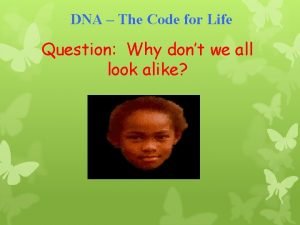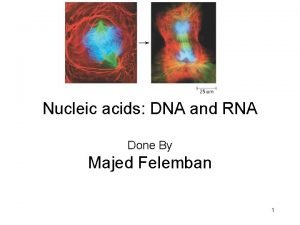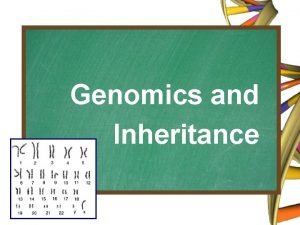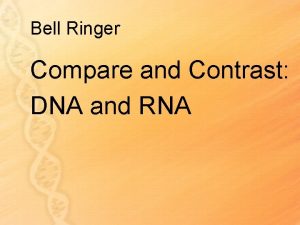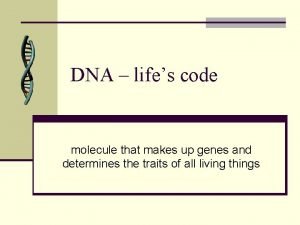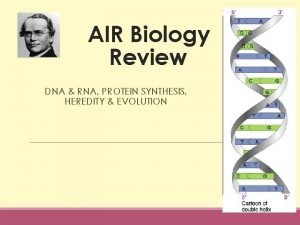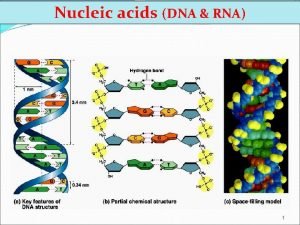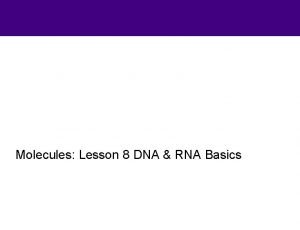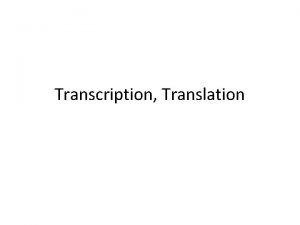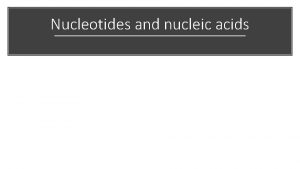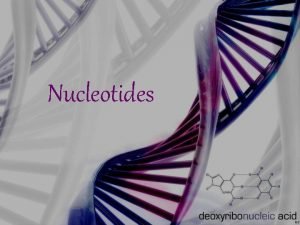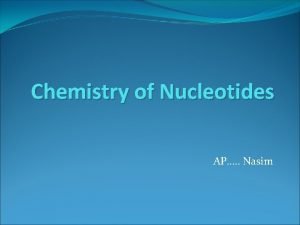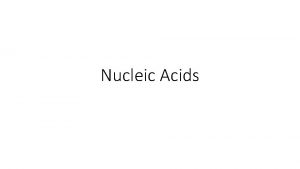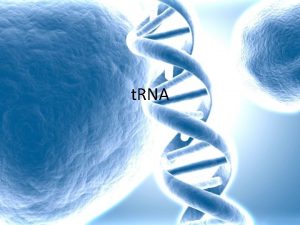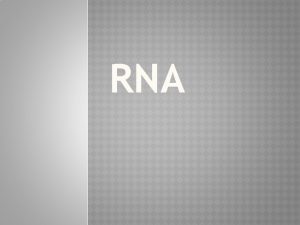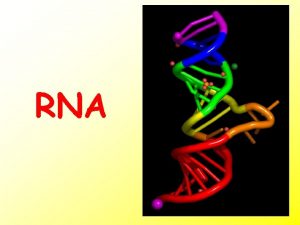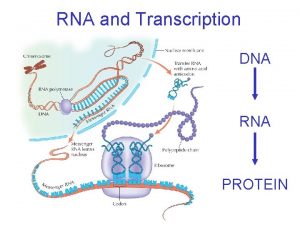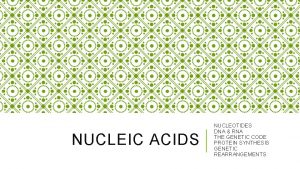DNA and RNA Nucleotides l DNA and RNA












- Slides: 12

DNA and RNA

Nucleotides l DNA and RNA are composed of several nucleotides. l A nucleotide contains a sugar, a phospate and a nitrogenous base (A, U (rna), T, C, or G)

Backbone structure of RNA & DNA l Both backbones of DNA & RNA are composed of repeated sequences of sugars (deoxyribose or ribose) and phosphates

l DNA = Deoxyribo. Nucleic Acid l RNA = Ribo. Nucleic Acid

About DNA l Double stranded (2 strands) l Four bases (A, T, C, G: Adenine, Thymine, Cytosine, Guanine) l A&T are always paired; G&C are always paired l Double helix shaped l Deoxyribose (sugar)

DNA l Chemical substance in all living things l Controls the functions of cells l Located in the _____. l DNA controls what cells will become (specialize), and what type of organism will be produced (human, bird, etc)

About RNA l Single stranded (1 strand) l Protein synthesis l Four bases A, U, C, and G l U = Uracil l A & U are always paired; G&C are always paired l Ribose (sugar)

Types of RNA l m. RNA (messenger RNA): brings instructions from DNA inside of the nucleus to the cytoplasm.

Types of RNA l r. RNA (ribosomal RNA): uses instructions from the m. RNA to assemble amino acids l t. RNA (Transfer RNA): transfers amino acids to the ribosomes so that they can make PROTEINS.

The Central Dogma l. DNA→RNA→Proteins l. The flow of information goes from DNA to RNA, and finally to proteins.

Transcription l. A double stranded DNA helix unzips and a single strand of m. RNA is created. l Refer to p. 290 -291

Translation l When the nitrogenous bases (A, U, C, and G) from m. RNA are converted into amino acids that will later make proteins.
 Amino acid nucleotide
Amino acid nucleotide When dna untwists, unzips, and nucleotides fill in.
When dna untwists, unzips, and nucleotides fill in. Four nucleotides of dna
Four nucleotides of dna Order of nucleotides in dna
Order of nucleotides in dna Chapter 11 dna and genes
Chapter 11 dna and genes Rna transfer
Rna transfer Comparing dna and rna worksheet answers
Comparing dna and rna worksheet answers Dna to protein steps
Dna to protein steps Venn diagram of transcription and translation
Venn diagram of transcription and translation Dna and rna coloring worksheet
Dna and rna coloring worksheet Transfer rna
Transfer rna Nucleic acid dna structure
Nucleic acid dna structure Rnabases
Rnabases

